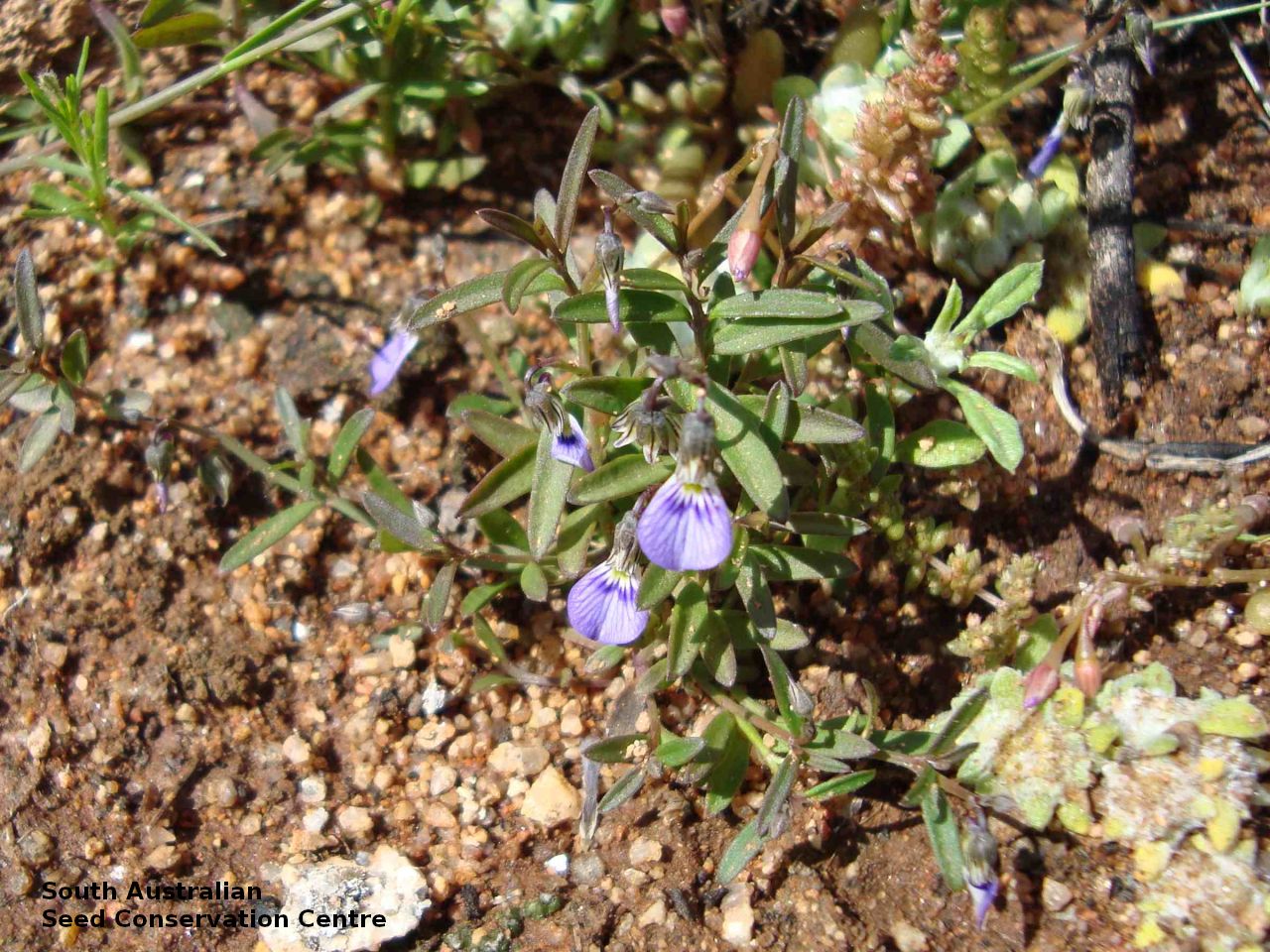
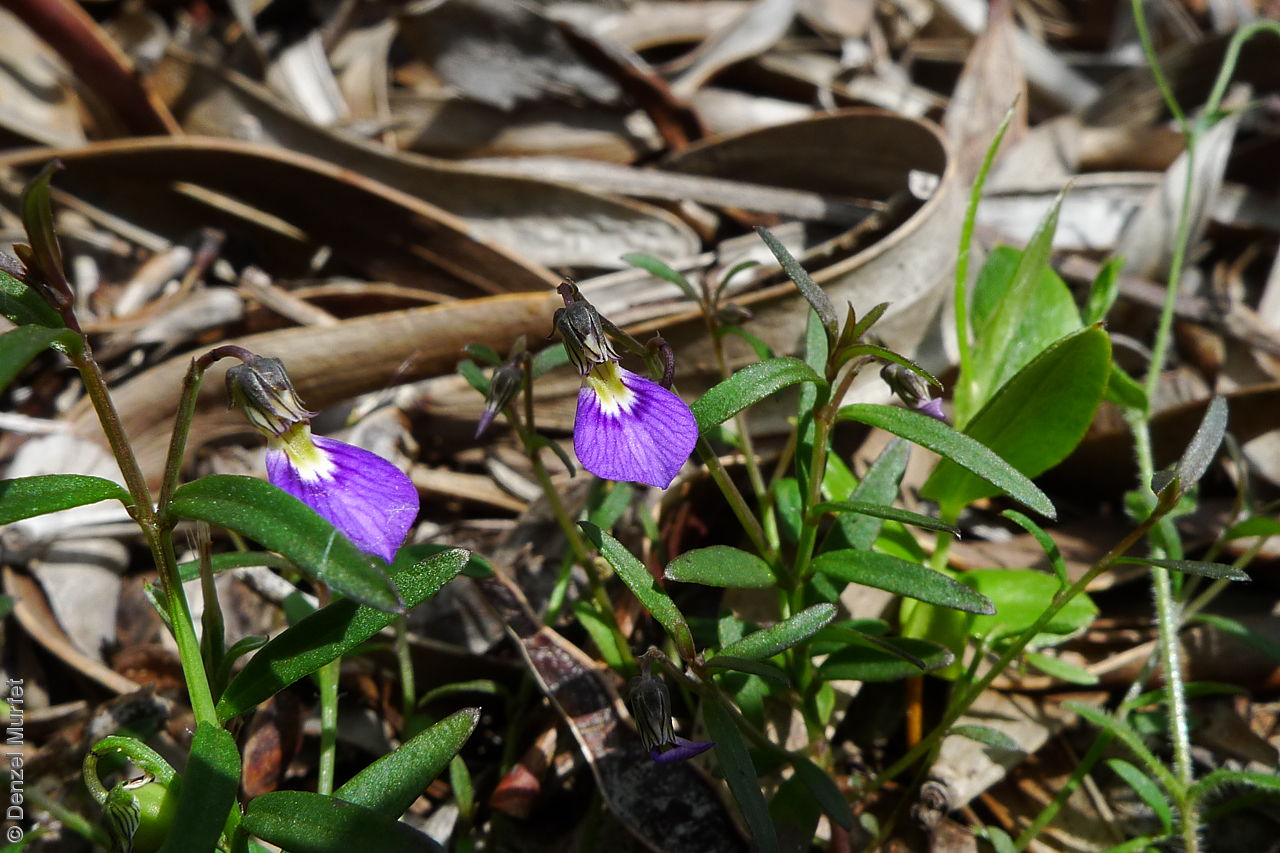
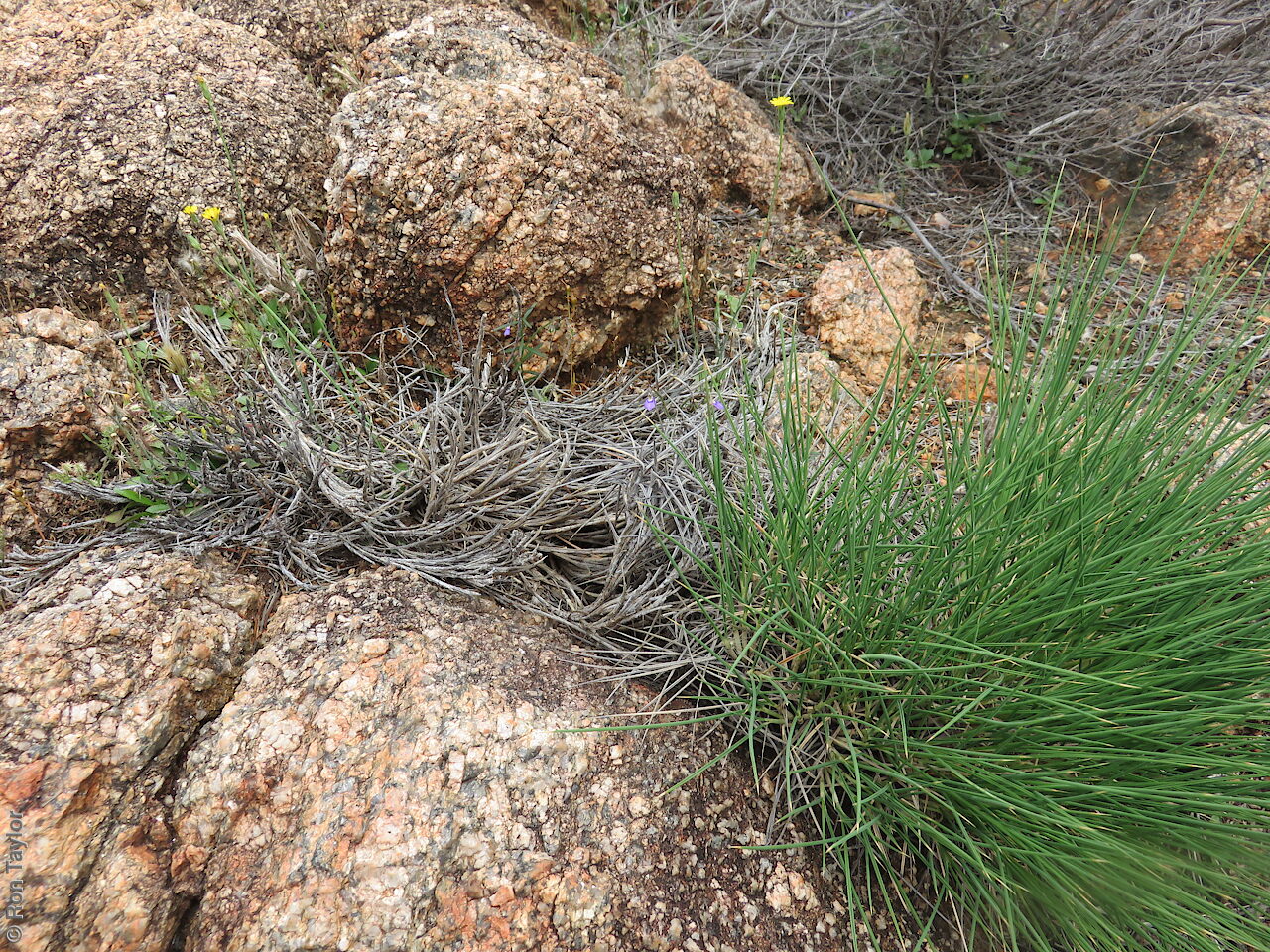
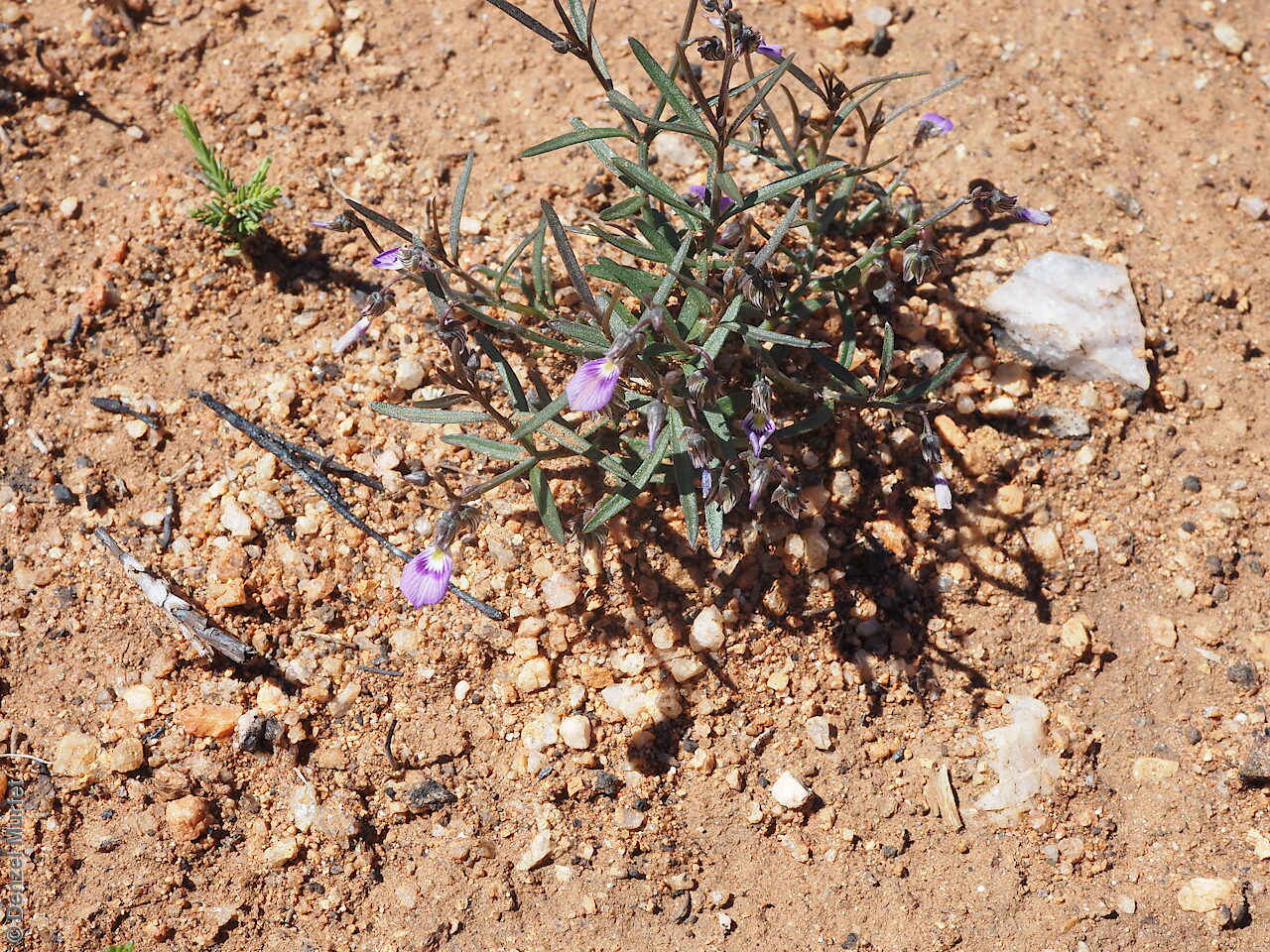
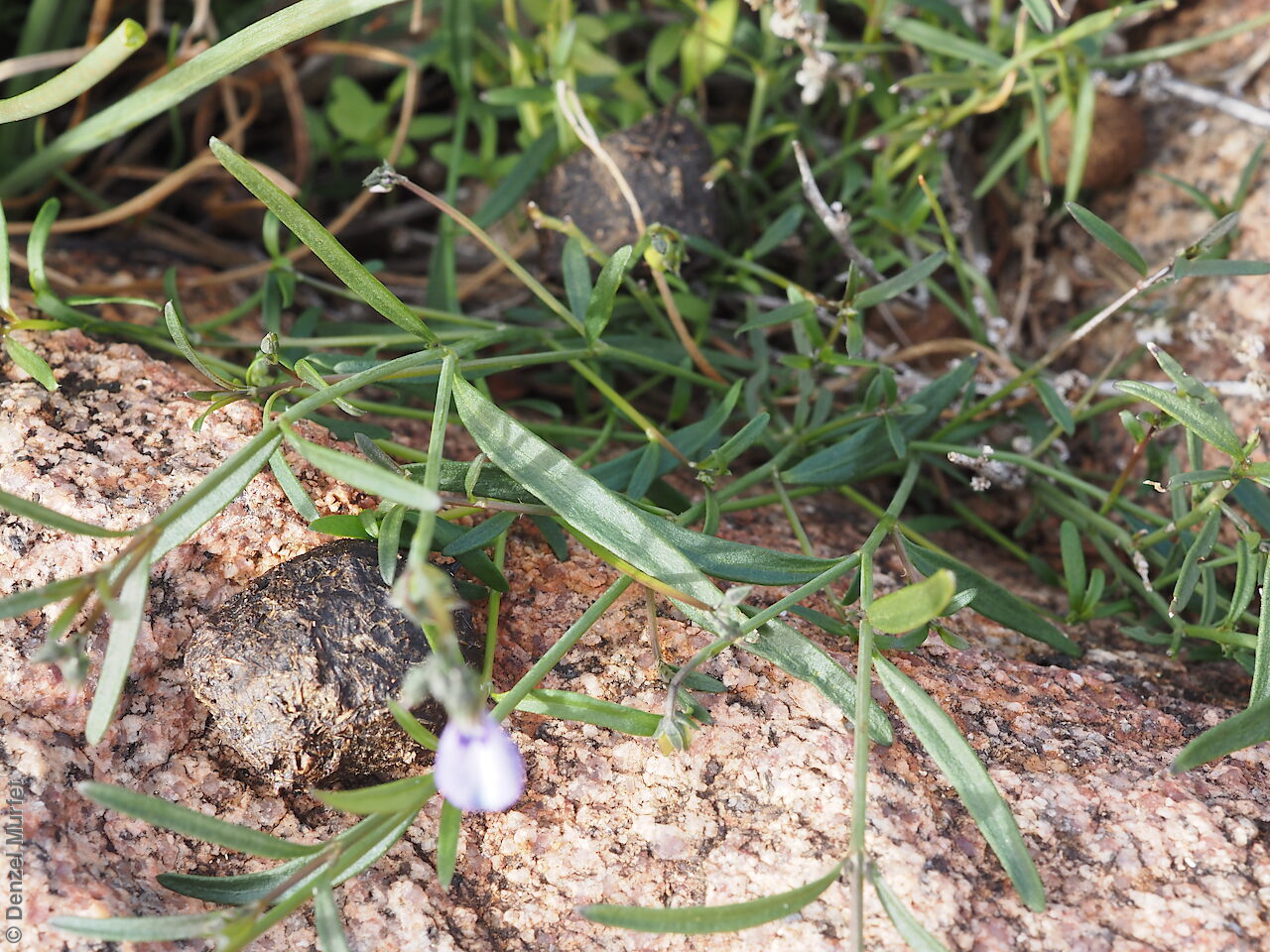
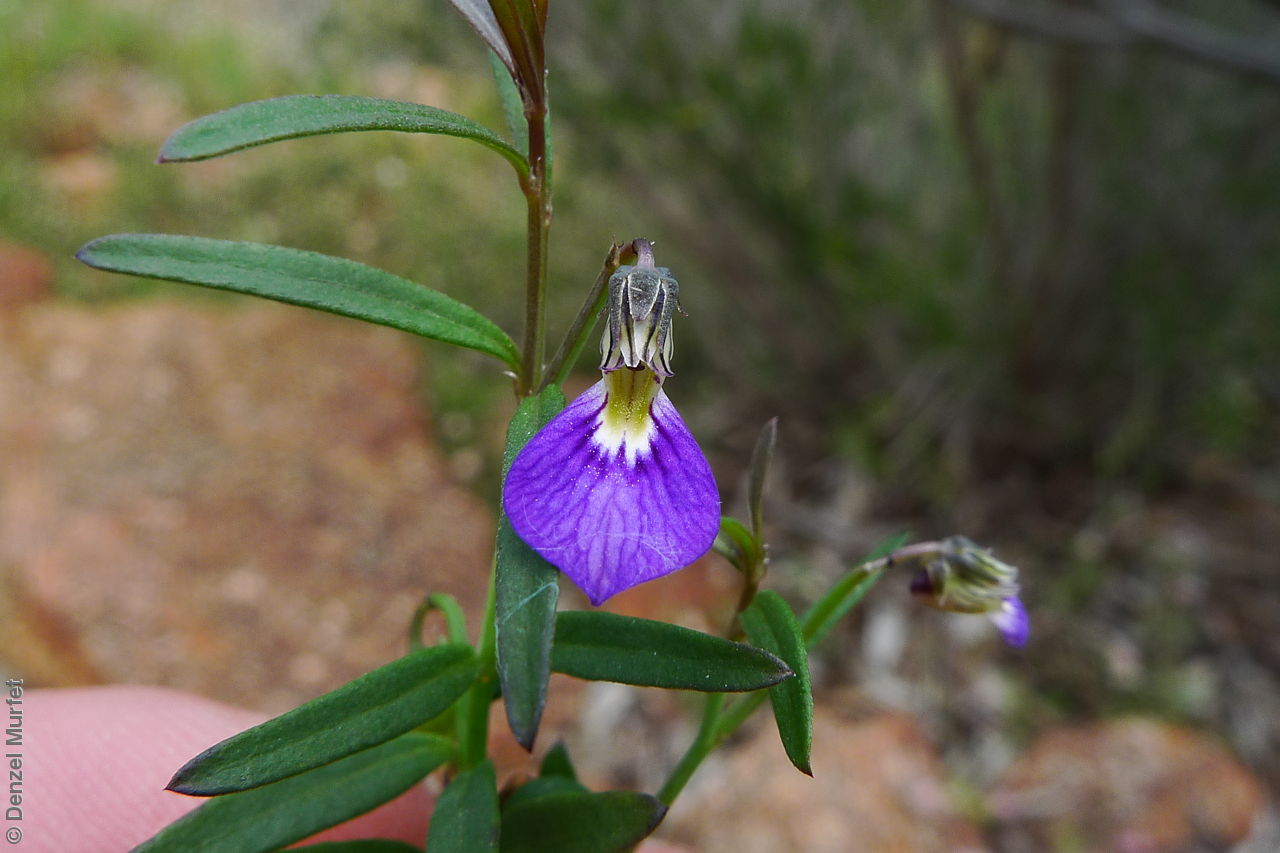
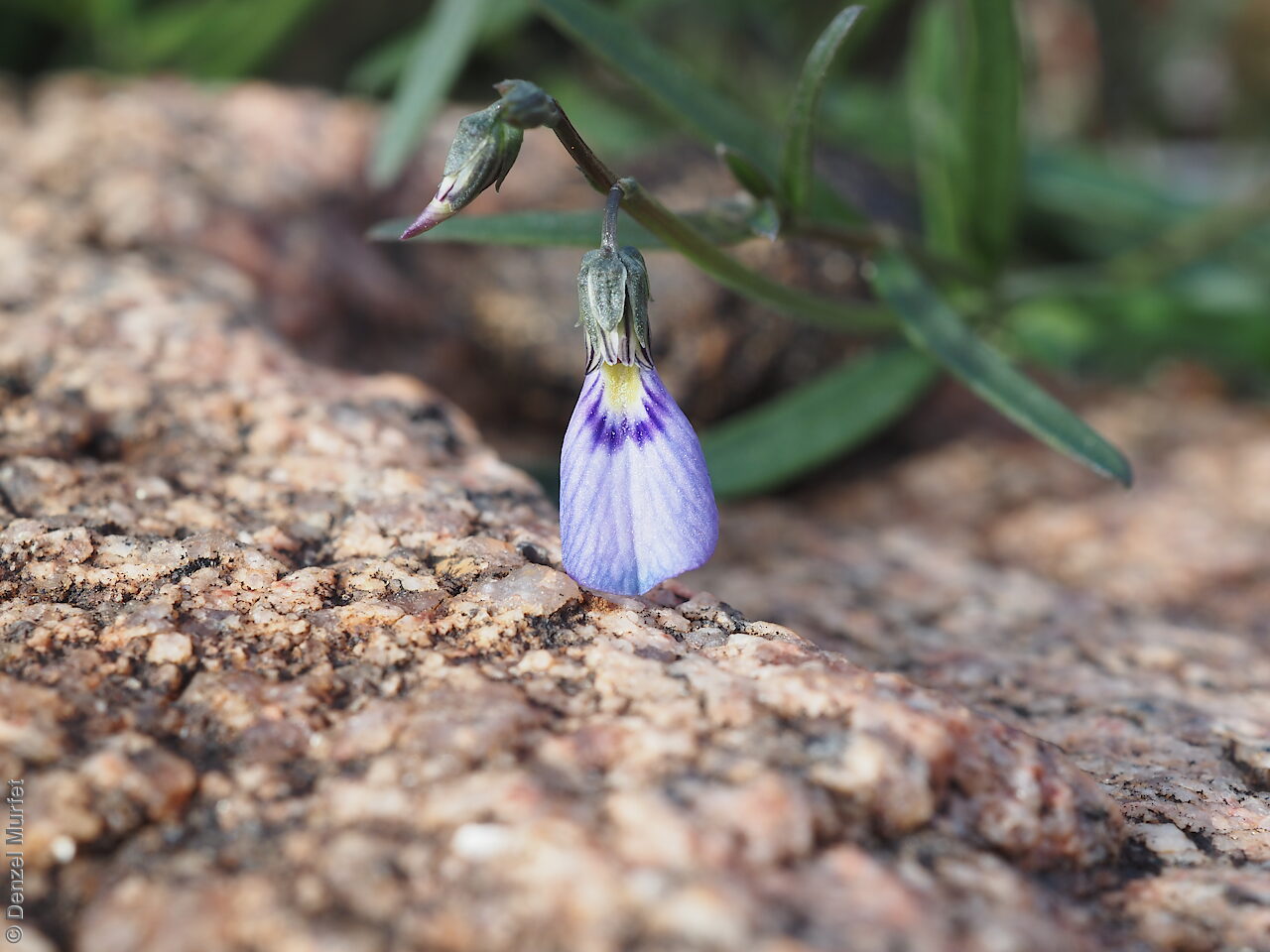
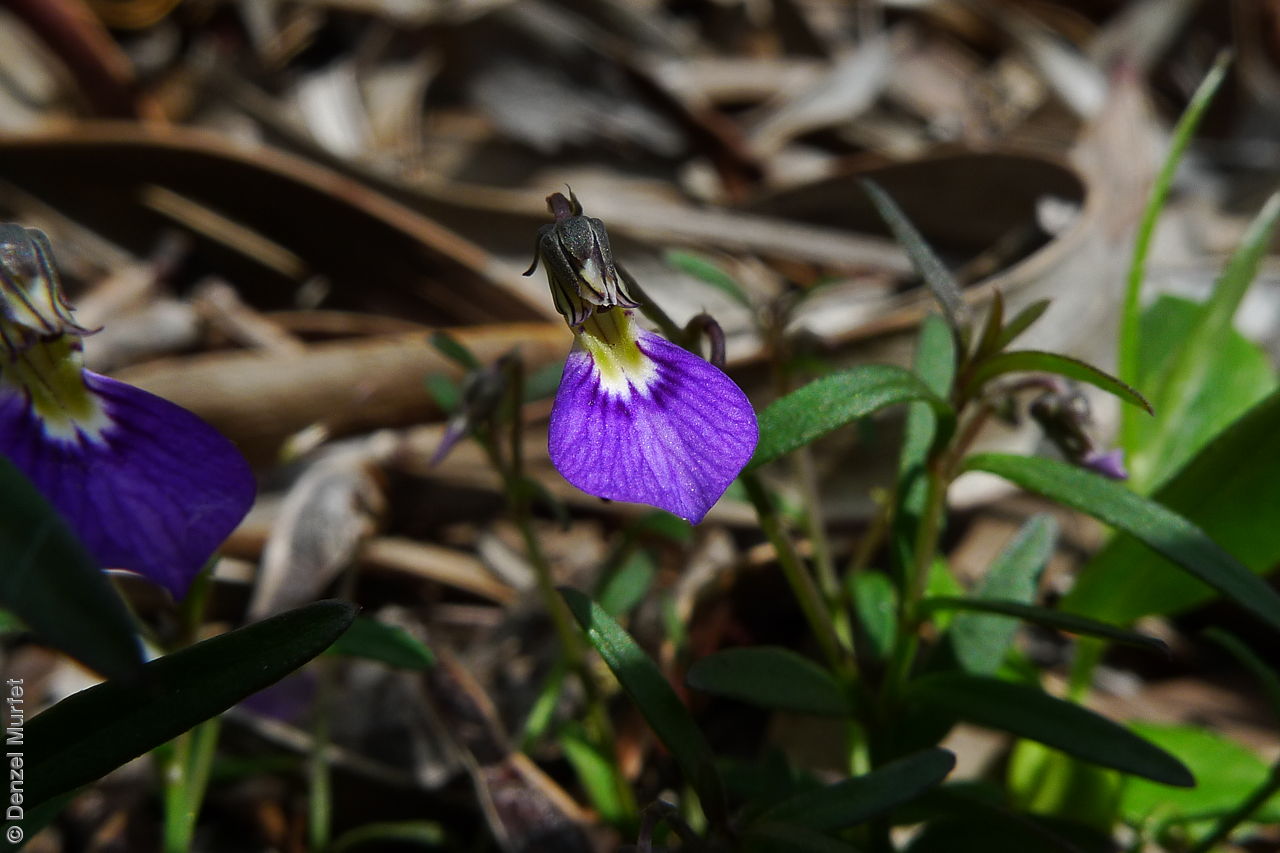
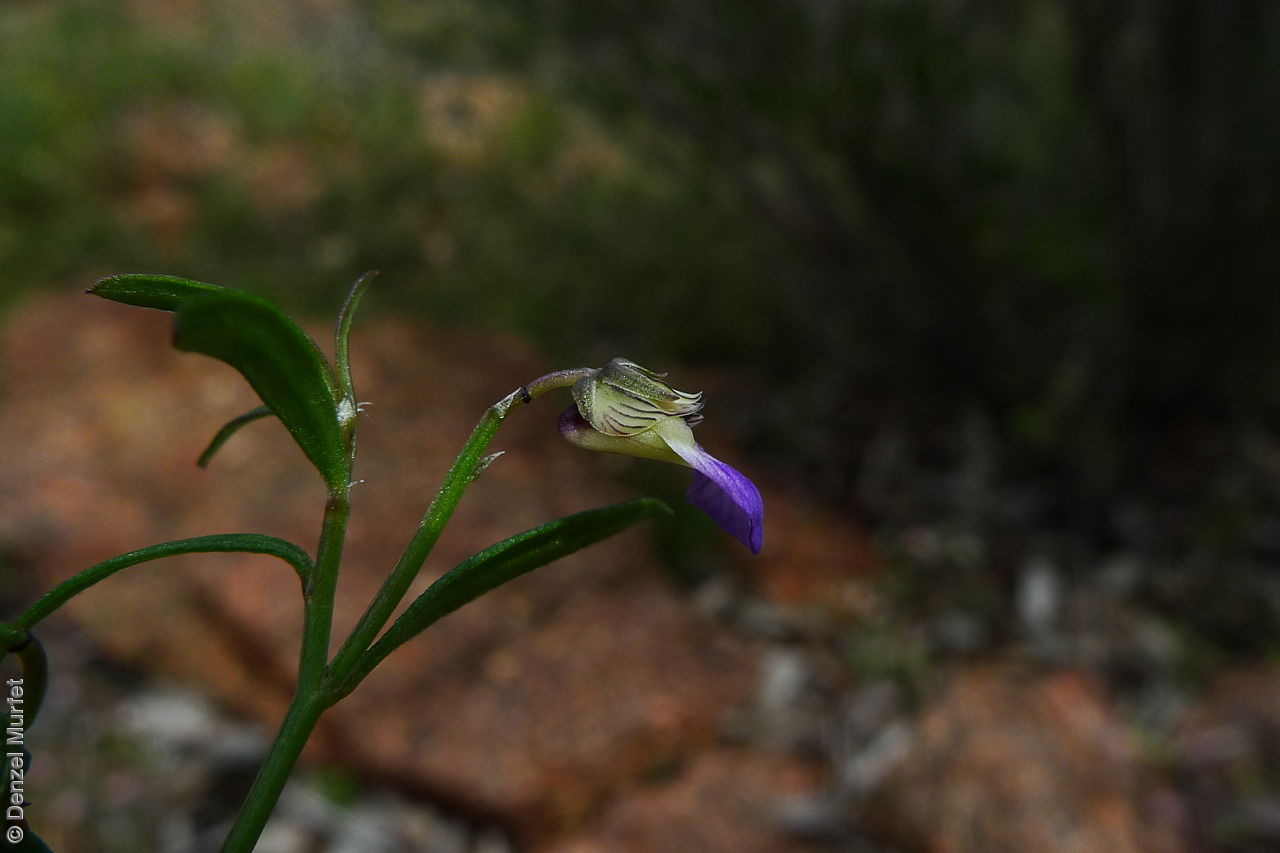
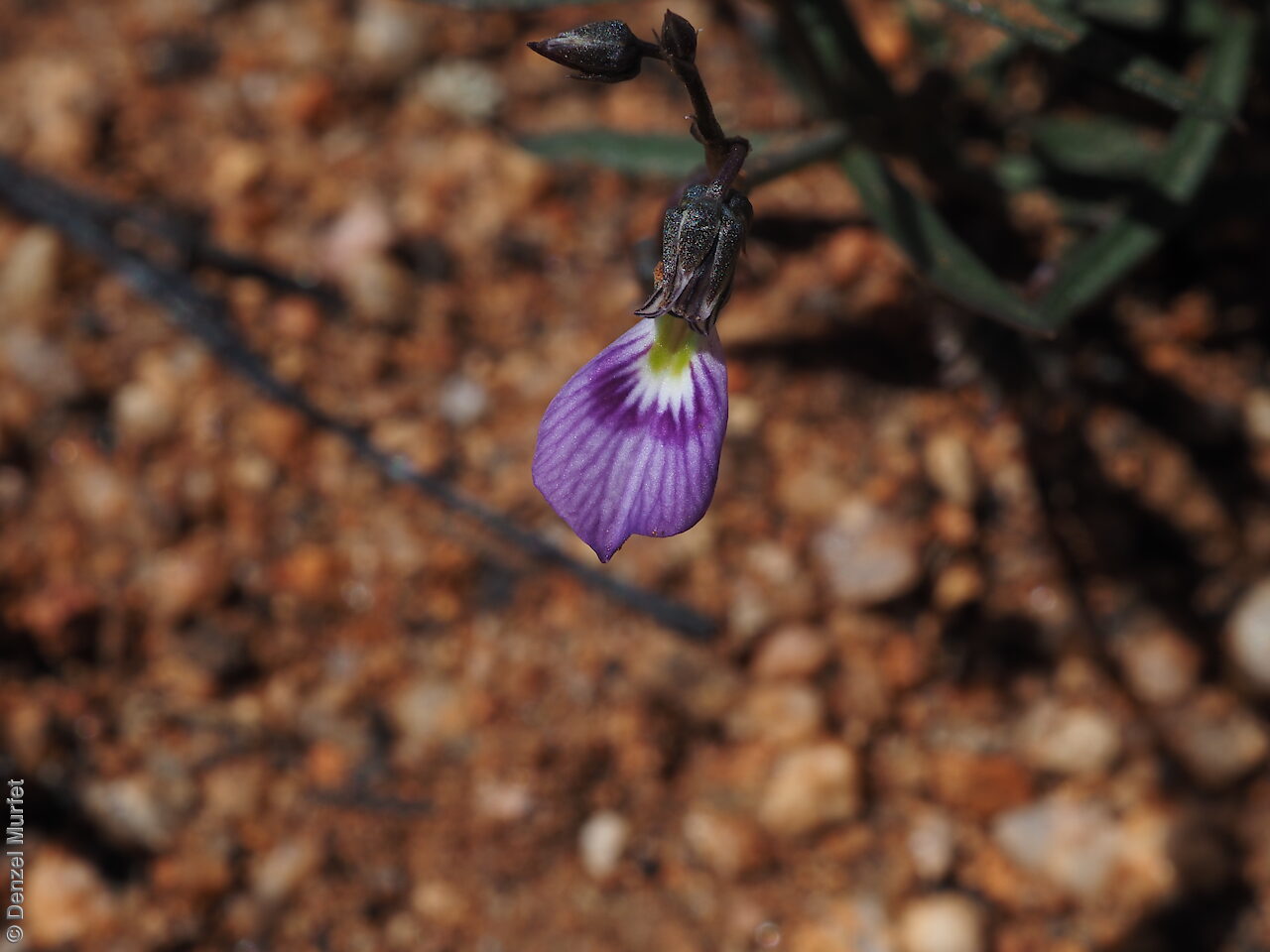
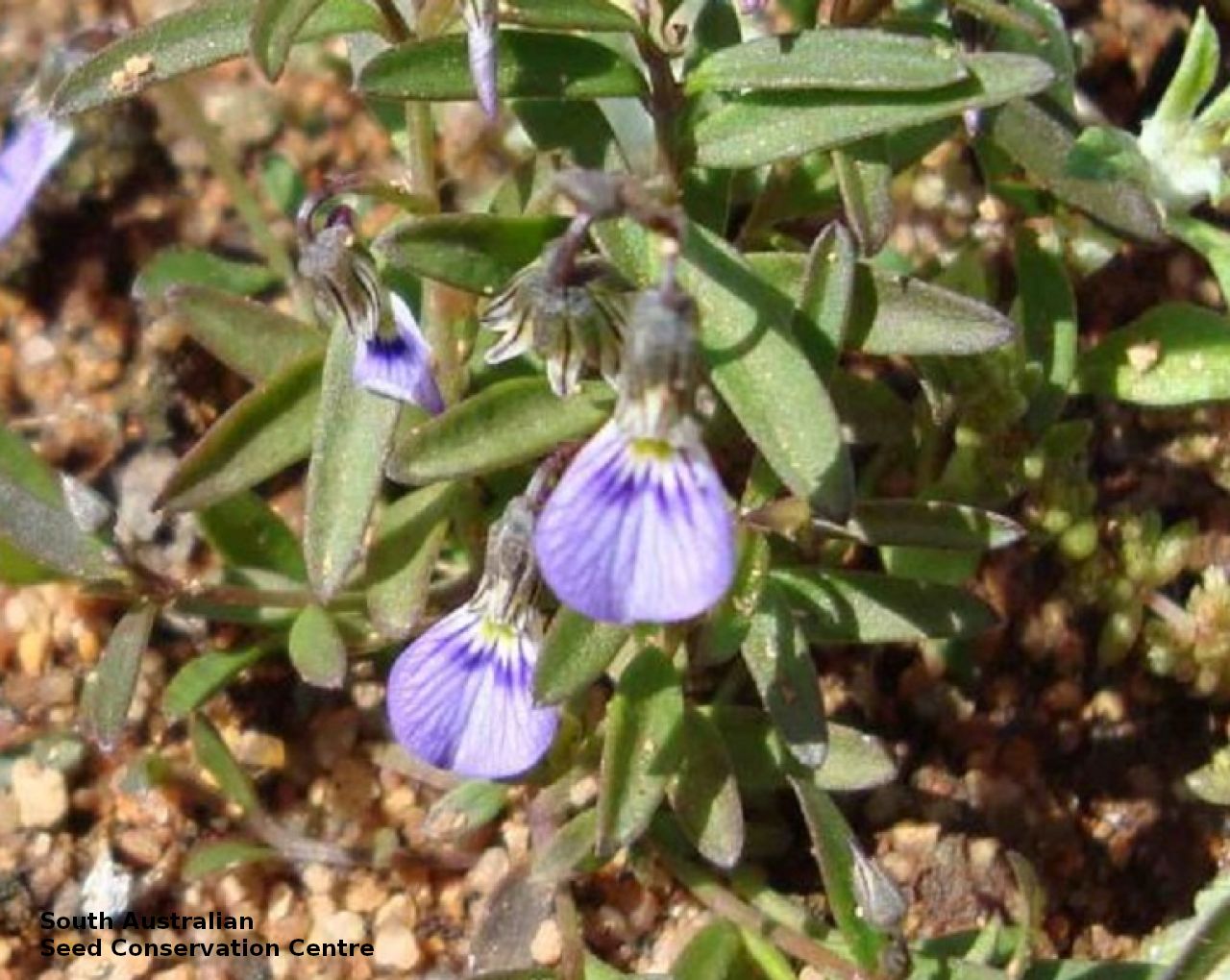
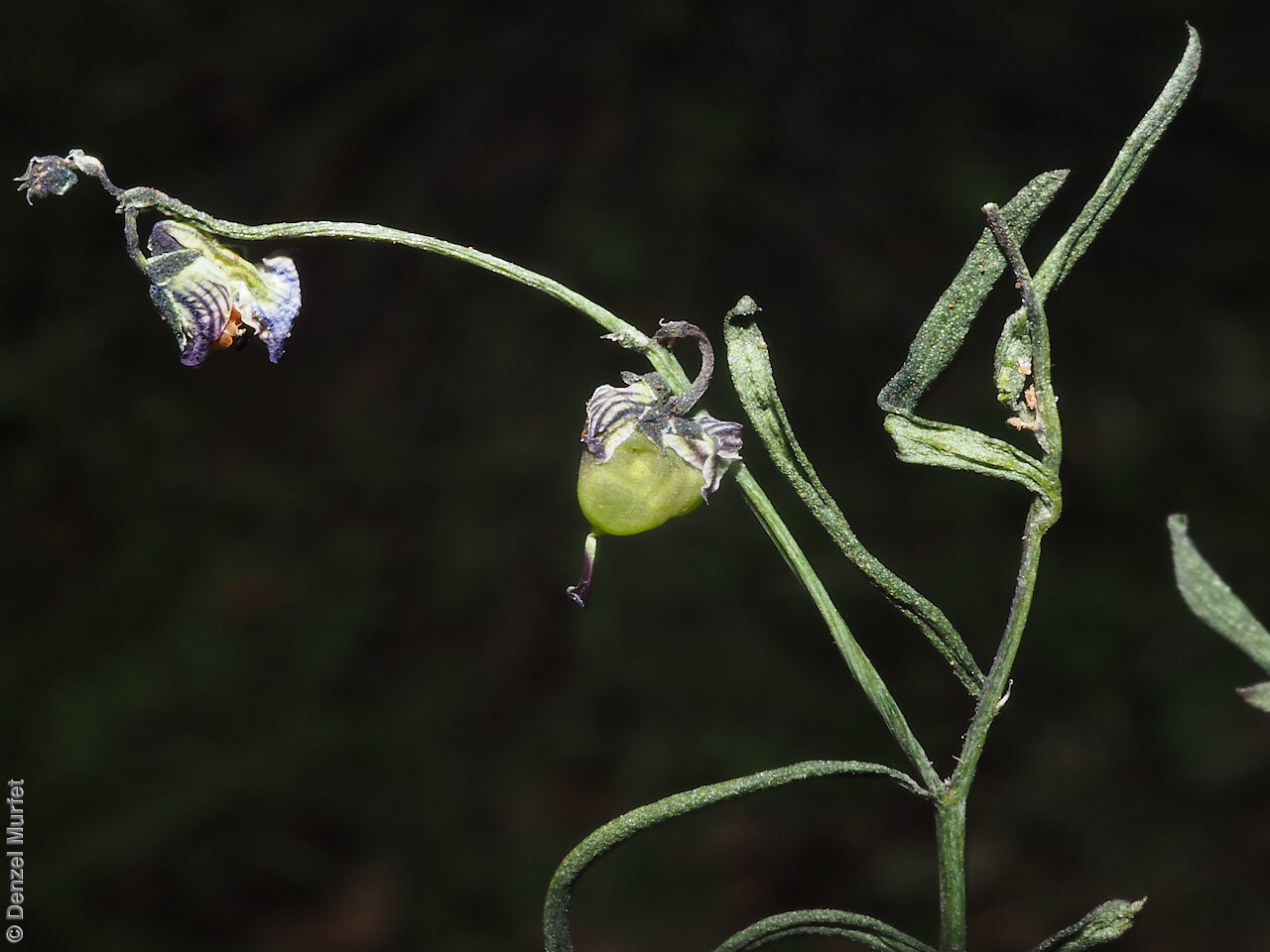
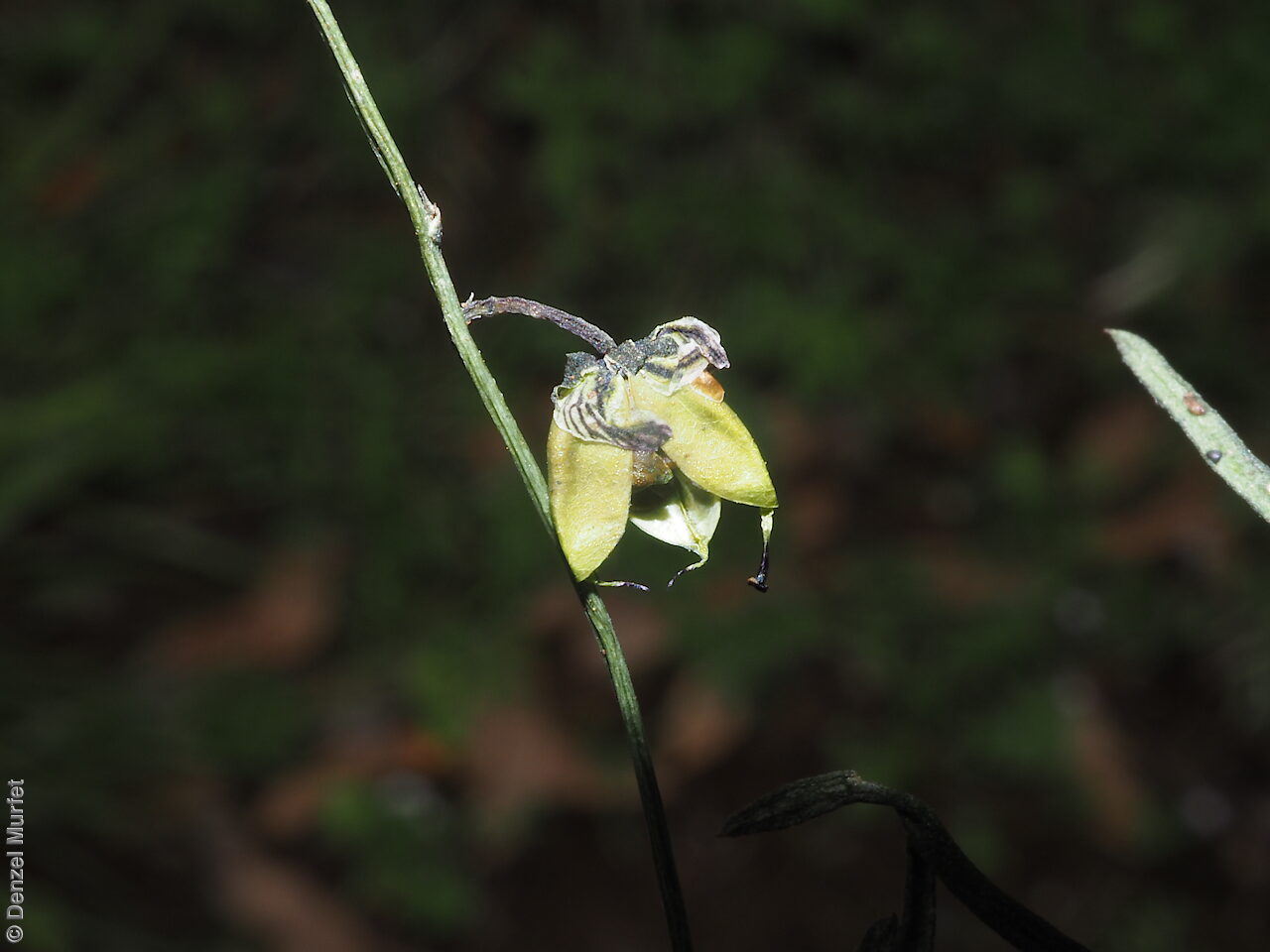
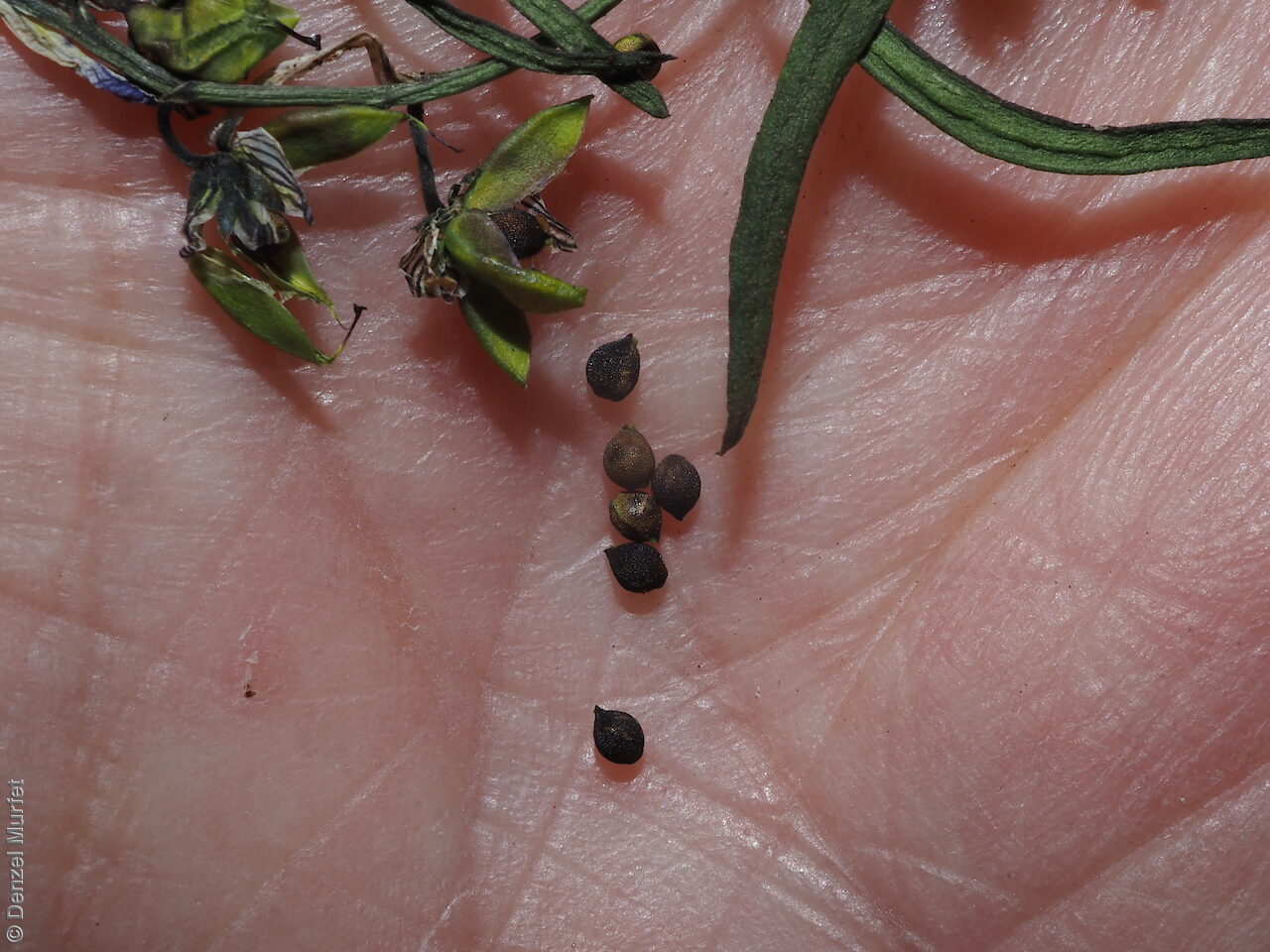
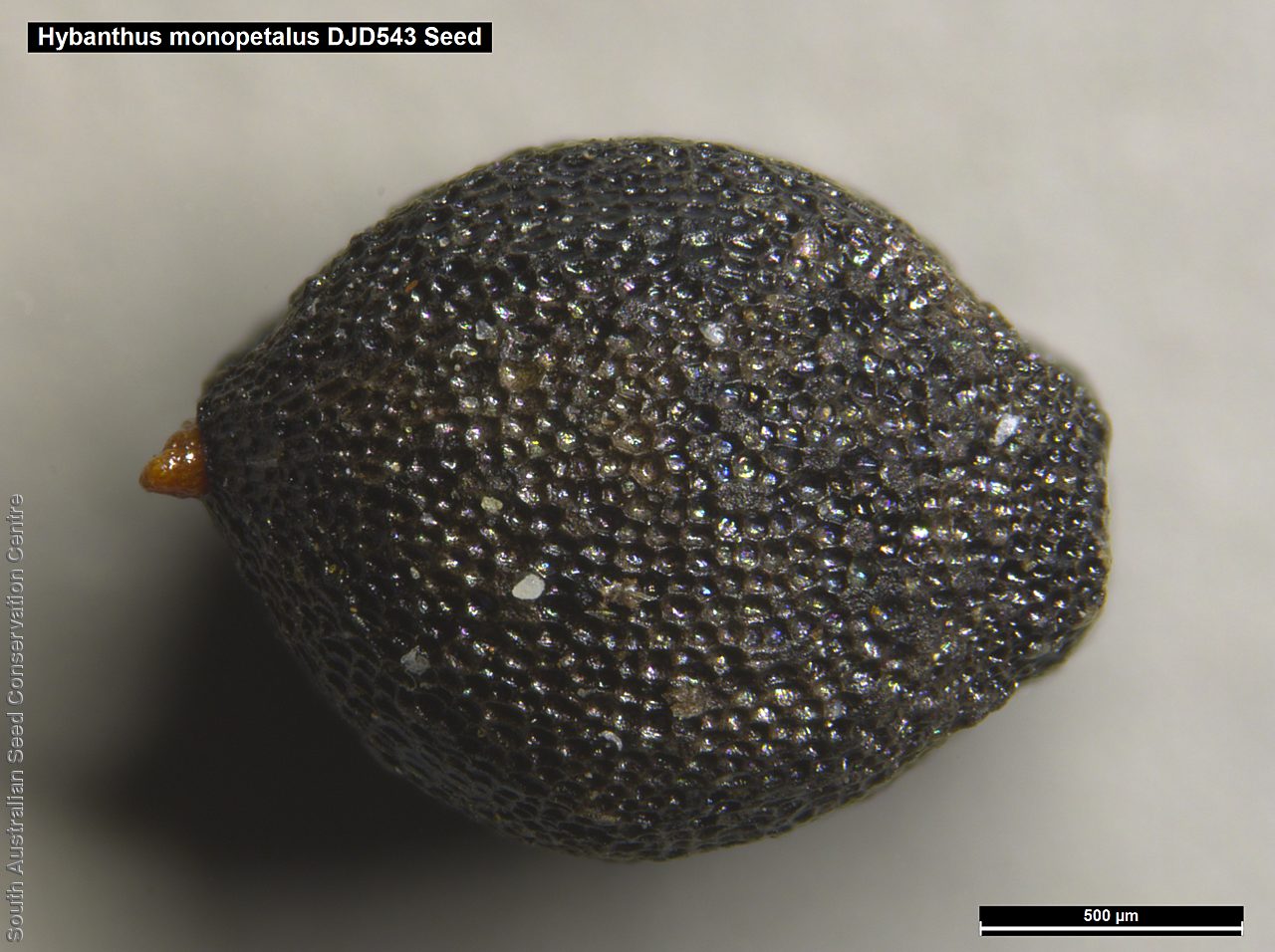
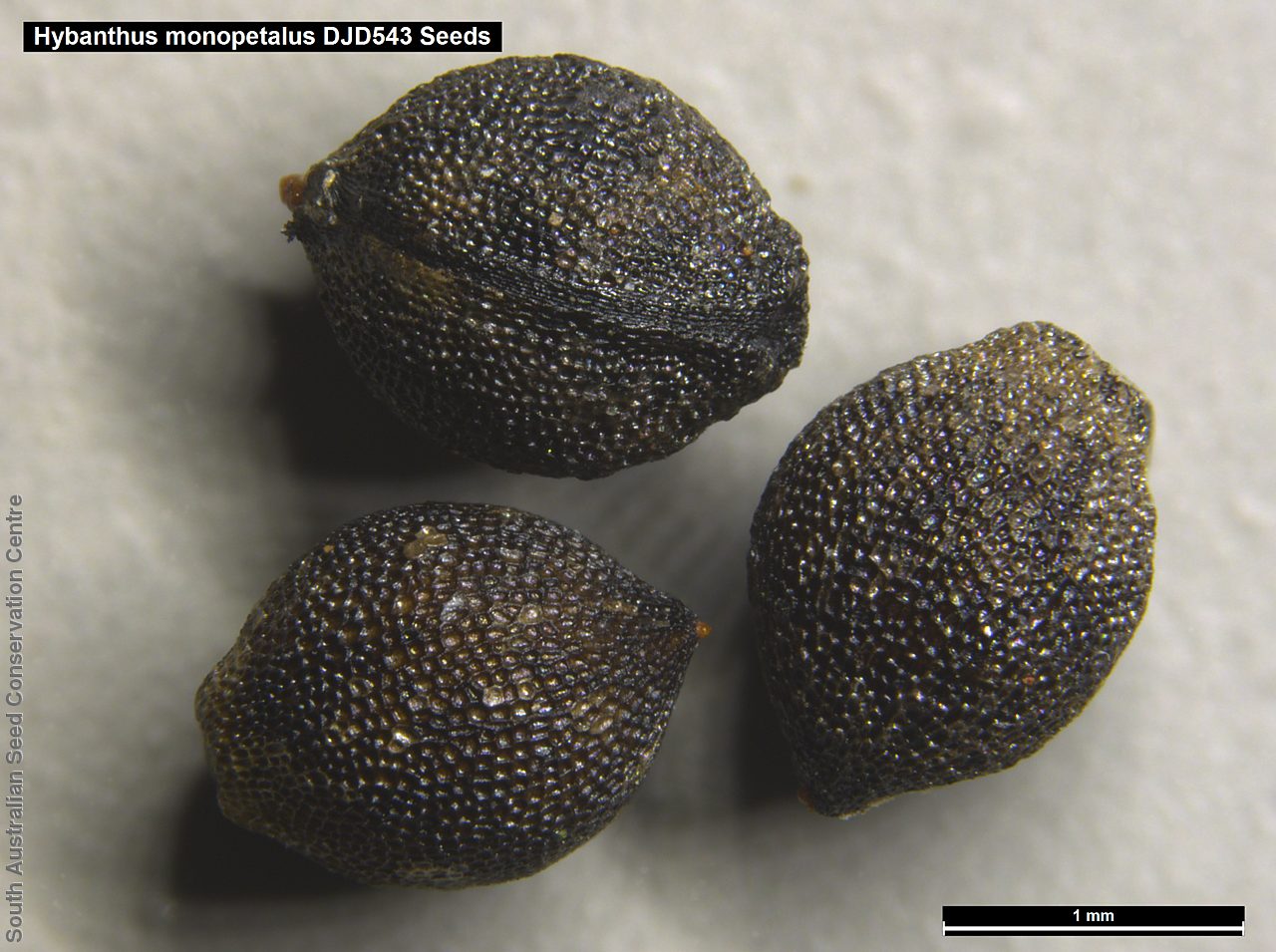

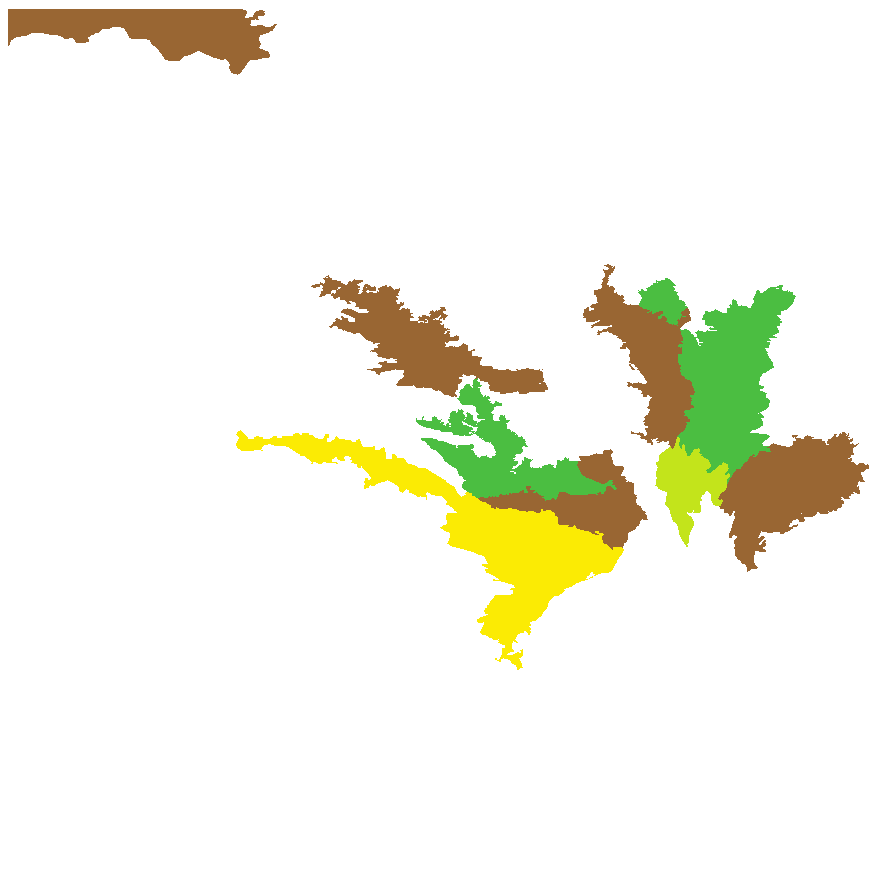
Botanical art
Prior names
Hybanthus monopetala
Ionidium monopetalum
Hybanthus tatei
Common names
Slender Violet-bush
Etymology
Hybanthus, from the Greek 'hybos', meaning hump and 'anthos', meaning flower, referring to the spurred or pouched anterior petal. Monopetalus from the Greek 'monos', meaning single and 'petala' meaning petal, referring to the flower appearing to have only one large petal.
Distribution and status
Found in the east central part of South Australia with an isolated distribution in the north-east corner, growing on sandy soils or rocky outcrops. Also found in Queensland, New South Wales and Victoria. Native. Common in South Australia. Rare in Victoria. Common in the other States.
Herbarium regions: North Western, Gairdner-Torrens, Flinders Ranges, Eastern, Eyre Peninsula, Northern Lofty, Murray
AVH map: SA distribution map (external link)
Plant description
Smooth perennial herb to 60 cm tall. Leaves alternate, the upper opposite or nearly so; linear to oblong, to 90 mm long and 4 mm wide; margins recurved; stipules linear to triangular to 1.5 mm long. Inflorescence axillary, along a spike far exceeding the leaves, with one large blue-mauve petal, lateral petals very small. Flowering between August and November. Fruits are pale-green ovoid capsule to 6 mm long, with numerous seeds.
Seed collection and propagation
Collect seeds between October and January. Collect capsules that are maturing, drying and turning pale-green with dark seeds inside. Keep an eye on the capsules as they can ripen and split open quickly. Place the capsules in a tray and cover with paper to prevent seeds popping out and leave to dry for a week. Then rub the capsules gently with your hands to dislodge the seeds. Use a sieve to separate the unwanted material. Store the seeds with a desiccant such as dried silica beads or dry rice, in an air tight container in a cool and dry place.